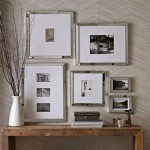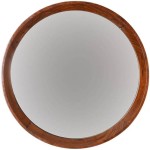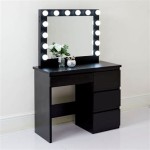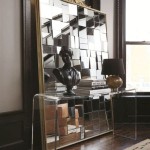Art Deco Dressing Table With Round Mirror
The Art Deco period, spanning the 1920s and 1930s, left an indelible mark on design and architecture. Its influence extended to furniture, particularly bedroom pieces like the dressing table. A hallmark of this era is the combination of geometric shapes, luxurious materials, and exquisite craftsmanship. The Art Deco dressing table with a round mirror epitomizes this style, representing both functionality and glamorous design. This article explores the key features of these iconic pieces, their enduring appeal, and their place within the broader Art Deco movement.
Distinctive Design Elements
Art Deco dressing tables are instantly recognizable by their distinct design elements. Geometric shapes are paramount, with rectangular or trapezoidal tabletops often featuring stepped or curved edges. Inlaid patterns, typically featuring contrasting veneers or materials like mother-of-pearl, add visual interest. The use of exotic woods, such as ebony, macassar ebony, and burl walnut, highlights the luxurious nature of these pieces. Metal accents, often in chrome, nickel, or brass, further contribute to the sleek, modern aesthetic. The round mirror, frequently framed in matching wood or metal, completes the ensemble, adding a touch of Hollywood glamour.
The Round Mirror: A Focal Point
The round mirror is arguably the defining feature of the Art Deco dressing table. It serves as both a functional object and a decorative focal point. The circular shape contrasts beautifully with the angular lines of the table, softening the overall look. Mirrors in this style often feature etched or frosted detailing, adding an extra layer of sophistication. The size of the mirror can vary, but it is typically proportioned to the table, creating a harmonious balance. Some mirrors are fixed, while others are adjustable, allowing for greater flexibility.
Functionality and Practicality
While aesthetics are central to Art Deco design, functionality is equally important. Dressing tables from this period were designed to be practical as well as beautiful. They typically feature drawers and compartments to store cosmetics, jewelry, and other personal items. The drawers often have intricate hardware, such as geometric pulls or stylized knobs, that further enhance the Art Deco aesthetic. Some tables also incorporate a vanity bench or stool, upholstered in luxurious fabrics like velvet or leather, providing a comfortable place to sit while getting ready.
Materials and Craftsmanship
Art Deco furniture is renowned for its high-quality materials and meticulous craftsmanship. Dressing tables from this era were often constructed from exotic hardwoods, chosen for their rich color and beautiful grain patterns. The use of veneers allowed for intricate marquetry and inlay work, creating stunning visual effects. Metal accents were carefully polished and plated, adding a touch of shine and sophistication. The attention to detail is evident in every aspect of the design, from the carefully crafted joinery to the meticulously applied finishes.
Enduring Appeal and Collectibility
Art Deco furniture has experienced a resurgence in popularity in recent years, with dressing tables being particularly sought-after items. The timeless elegance and sophisticated design of these pieces make them a desirable addition to any interior. Original Art Deco dressing tables are now highly collectible, often fetching significant prices at auction. Their enduring appeal lies in their ability to blend seamlessly with both traditional and contemporary décor, adding a touch of vintage glamour to any space.
Modern Interpretations
The influence of Art Deco continues to inspire contemporary furniture designers. Modern interpretations of the Art Deco dressing table often incorporate the key elements of the original style, such as geometric shapes, luxurious materials, and round mirrors. However, these contemporary pieces may also feature updated details, such as streamlined silhouettes, minimalist hardware, and new material combinations. These modern interpretations offer a fresh take on a classic design, allowing individuals to incorporate the Art Deco aesthetic into their homes in a variety of ways.

Art Deco Danish Dressing Table With Round Mirror And Chair 1930s Set Of 2 For At Pamono

1940 S Art Deco Waterfall Vanity With Round Mirror By Webb Furniture Chairish

Art Deco Modern Vanity Dressing Table Round Mirror Leather And Walnut Wood For At 1stdibs Contemporary Desk

Art Deco Vanity With Large Round Mirror Chairish

Antique Vanity Waterfall Dresser Dressing Table Round Mirror And Drawers Art Deco 1868 Auctionninja Com

Pending 1938 1939 Art Deco Vanity Dressing Table With Shabby Chic Dresser Design Bathroom

Art Deco Dressing Table In Wood For At Pamono

1940 S Art Deco Waterfall Vanity With Round Mirror By Webb Furniture Chairish

Antique Art Deco Waterfall Style Mirrored Vanity Dressing Table W Stool Boudoir

Pin On Cupboards








